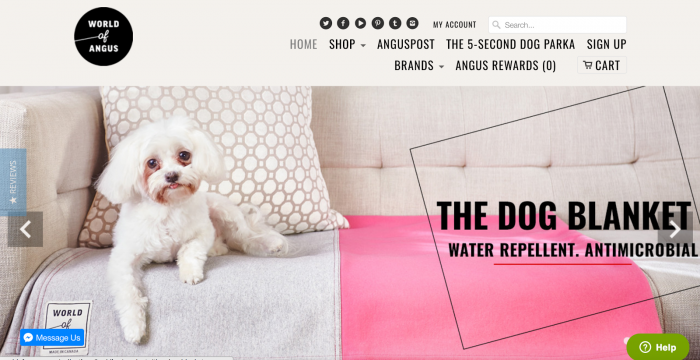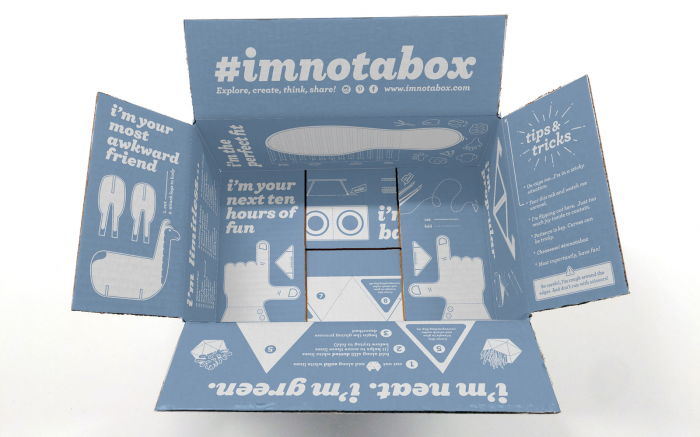
It’s the end of an era—in retail, at least.
For the last century, big retailers have been the dominant force in commerce. As a consumer, if you wanted to buy something, you went to Sears, JCPenney, or Wal-Mart.
If you were a brand, this meant you had to convince these giant retailers to carry your product if you wanted any chance of reaching customers.
Now, you have subscription brands whose products are never carried inside a brick-and-mortar retailer, like Dollar Shave Club, that are worth millions—and in some cases billions.
This is a new evolution of commerce, one where the pendulum of power has swung back from the retailers to the brand.
A new generation of brands are coming to prominence, and they’re doing it without the help of major retailers. I call them “craft brands.”
How Craft Brands Revolutionized Commerce
Historically, small brands have faced a number of barriers between them and larger scale, mainstream audiences:
- Access to large groups of customers was really on possible through distribution deals with major retailers.
- Manufacturing on a scale large enough to distribute to major retailers was incredibly expensive, and usually involved some internal infrastructure for production and shipping.
Small brands were in a catch 22 where they needed to be big enough to sign deals with major retailers, but that size required significant money, money they could only make by signing deals with major retailers.
With the advent of the modern internet, all of that changed.
Now, craft brands can easily get around those historic hurdles:
- Craft brands sell direct-to-consumer via the internet, cutting out the retailer middleman entirely.
- Craft brands completely outsource production and distribution—and most importantly—only have to manufacture as many goods as are ordered.
By making the traditionally prohibitive start up costs of business so much lower, craft brands have allowed for entirely new business models to emerge, including subscription services like Dollar Shave Club.
But perhaps even more influential, craft brands have allowed businesses to communicate directly with their customers on a scale previously unimaginable.
Brands like World of Angus can sell speciality pet items directly to customers through their website, without worrying about large inventory fees or negotiating contracts with retailers.
By simplifying production and distribution, craft brands have freed up time and resources that they can now dedicate to their customer relationships.
For example, Zappos’ famous #ImNotABox campaign featured boxes that were completely redesigned to promote reuse, recycling, and creativity—exactly the kind of thing Zappos’ audience values:
This campaign was incredibly easy for them to execute. All they had to was come up with a new design, and send it to their manufacturers.
Because of the nimbleness craft brands have brought to the production and distribution process, businesses like Zappos can initiate creative new marketing campaigns on a moment’s notice, investing huge amounts of energy into personalizing their customer’s experience.
This renewed focus on the customer relationship has also lead to a revolution in branding.
The New Differentiator In Branding
In the past, what separated brands was their ability to get distribution, to manufacture at scale, and to reach mainstream audiences. Now, brands that execute the strongest visions win.
The most passionate, competent brands—craft brands—are winning.
Take Under Armour. The brand began life as a small athletic brand whose entire customer base consisted of a few former members of the University of Maryland football team. It is now an international force worth billions.
Under Armour didn’t skyrocket to success because major retailers gave them a break and agreed to carry them. They communicated a strong vision to a specific niche on a global scale.
Whereas older brands would win through ubiquity—by running commercials on major television outlets and getting their product on the shelves of as many retailers as possible—Under Armour won by communicating to customers in their specific niche directly.
Under Armour didn’t take out major ads right away or start paying to have their clothes feature in movies. They gave their clothes to the best athletes they could—people who were in a position to influence Under Armours niche.
They didn’t focus on being a brand most people knew of, they worked to become the only brand people in their niche trusted.
As a result, Under Armour has risen to become a giant in their niche, which is incredible when you consider the size of brands like Nike that were already in the athletic niche.
Now Is The Time To Launch Your Craft Brand
The most common complaint I hear from would-be-entrepreneurs is that now is not the right time to launch their brand.
The funds aren’t there, the market isn’t there, they don’t have the time.
None of that is true.
You could put up a website today through AWS, market directly to customers in your niche, and manufacture products on an as-needed basis. Your brand could go from nonexistent to selling products immediately, at minimum cost.
Find a Home-Based Business to Start-Up >>> Hundreds of Business Listings.


















































